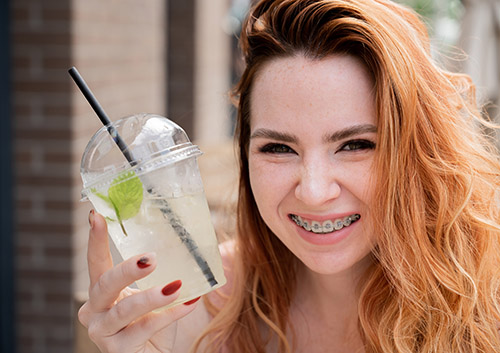Five (Easy-to-Keep!) Dental Resolutions for the New Year
January 1st, 2025

It’s a new year! A blank calendar! A traditional time to make a few changes that could change your life for the better.
And while we applaud big goals like learning a new language, practicing more between lessons, or finally cleaning out that locker, Dr. Nathan R. Yetter would like to start small with a few simple, proactive dental resolutions which will help keep your smile healthy and your orthodontic treatment right on schedule.
- Floss Every Day
Yes, we know we talk a lot about flossing. That’s because flossing can be a game-changer when it comes to healthy teeth and gums.
Proper flossing removes the plaque from spots your brush often misses—between the teeth and near the gum line. When you floss, you accomplish two goals: you help prevent cavities and you help prevent gum disease. And once each day is all it takes—as long as you take your time and floss correctly.
If you’re having trouble flossing properly (a very common problem even without braces!), don’t hesitate to talk with Dr. Nathan R. Yetter to discover the best techniques and products to make your flossing experience as effective as possible. Floss threaders, specially designed orthodontic floss, or a water flosser can help keep your teeth and braces free of plaque and food debris.
- Retire Your Brush
Brushes work hard—that’s why they should be replaced after a few months of use. Bristles start to fray over weeks of brushing, which means you aren’t getting the full benefit of your great brushing technique.
Switch out your brush every three to four months, or earlier if you notice any bristle damage, and you’ll enjoy cleaner teeth without changing your normal brushing habits.
- Protect Your Smile
Take some simple, everyday precautions to protect your teeth and your smile.
- If you haven’t already, be sure to buy a soft-bristled brush when you replace your old one. Soft bristles are strong enough to brush away plaque while protecting your tooth enamel and gum tissue from abrasion.
- Use a mouthguard when you enjoy any sports or activities where you might make contact with an object or person or the ground. If you wear braces, a custom mouthguard can be fabricated at our Mesa office to protect both your mouth and your braces.
- Protect and strengthen your tooth enamel with fluoride, a proven cavity-fighter. Fluoride toothpaste? Yes, please!
- Keep Up the Good Work
Your orthodontic treatment will go smoothly when you do your part! This means:
- Eating a braces friendly diet. Avoid all those difficult crunchy, sticky, chewy foods that can dislodge your brackets or wires.
- If you’re supposed to wear bands, headgear, or other appliances, be sure to follow your orthodontist’s instructions on how and how long to wear them each day.
- If you wear aligners, wear them for the hours required so you’ll be ready for your next set right on schedule.
- If you have a retainer, wear it as directed. These first months with your retainer are especially important while your teeth grow stable in their new positions. And wearing your retainer after your treatment is complete will keep that beautiful smile picture-perfect for years to come.
- See Your Dentist Regularly
Most people benefit from seeing their dentists twice a year for a complete oral examination and a professional cleaning. Regular visits to your dentist are especially important now.
Your dentist and hygienist will let you know if you’ve been doing a good job cleaning around your braces, and where and how you might do more. You’ve been doing a great job with your orthodontic schedule, and you don’t want to delay your treatment with a cavity!
Start the new year off right. These five small adjustments to your daily routine can have a big impact on your oral health while helping to keep your orthodontic treatment right on track. Be proactive now, and enjoy a new year filled with healthy smiles.








 Website Powered by Sesame 24-7™
Website Powered by Sesame 24-7™